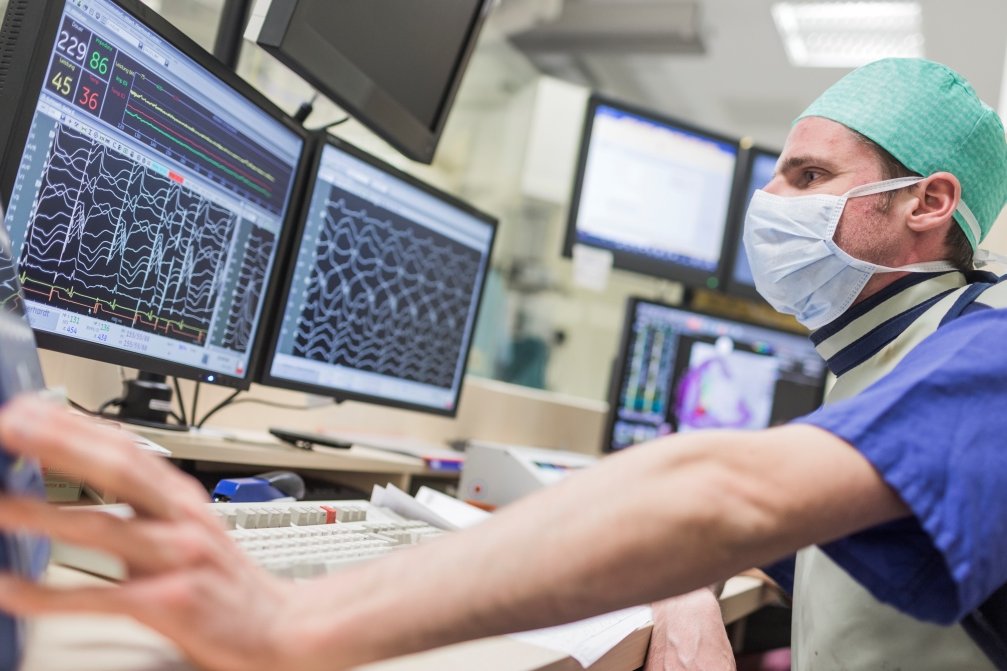![[Translate to Englisch:] Ablation im EPU-Labor, Herzzentrum Leipzig](/fileadmin/_processed_/e/a/csm_Rhythmologie_EPU_Sommer_8776_05f27c61d3.jpg)
Ablation can put a stop to cardiac arrhythmia, whether harmless or life-threatening, especially when medication is no longer alleviating the condition and it is possible to avoid heart surgery in this way.
Cardiac ablation is one of the most frequently used and effective interventions performed at the Heart Center Leipzig to alleviate and correct cardiac arrhythmia. Every year, our team performs some 2,400 catheter ablations and electrophysiological examinations.
Ablation is especially effective in cases where drugs are not working (any longer). It is performed most commonly to treat atrial fibrillation, but there are other areas of application too for its use here at the Heart Center.
